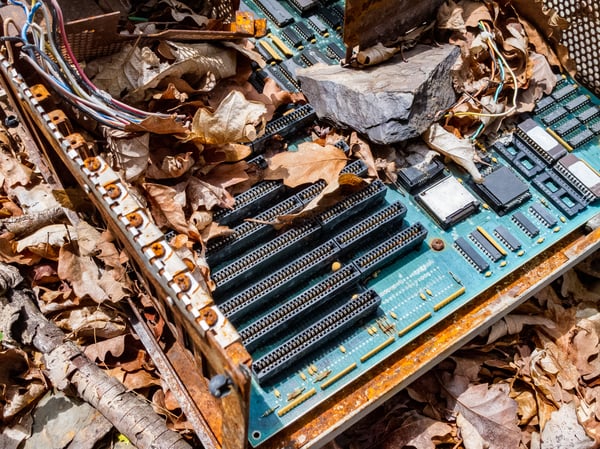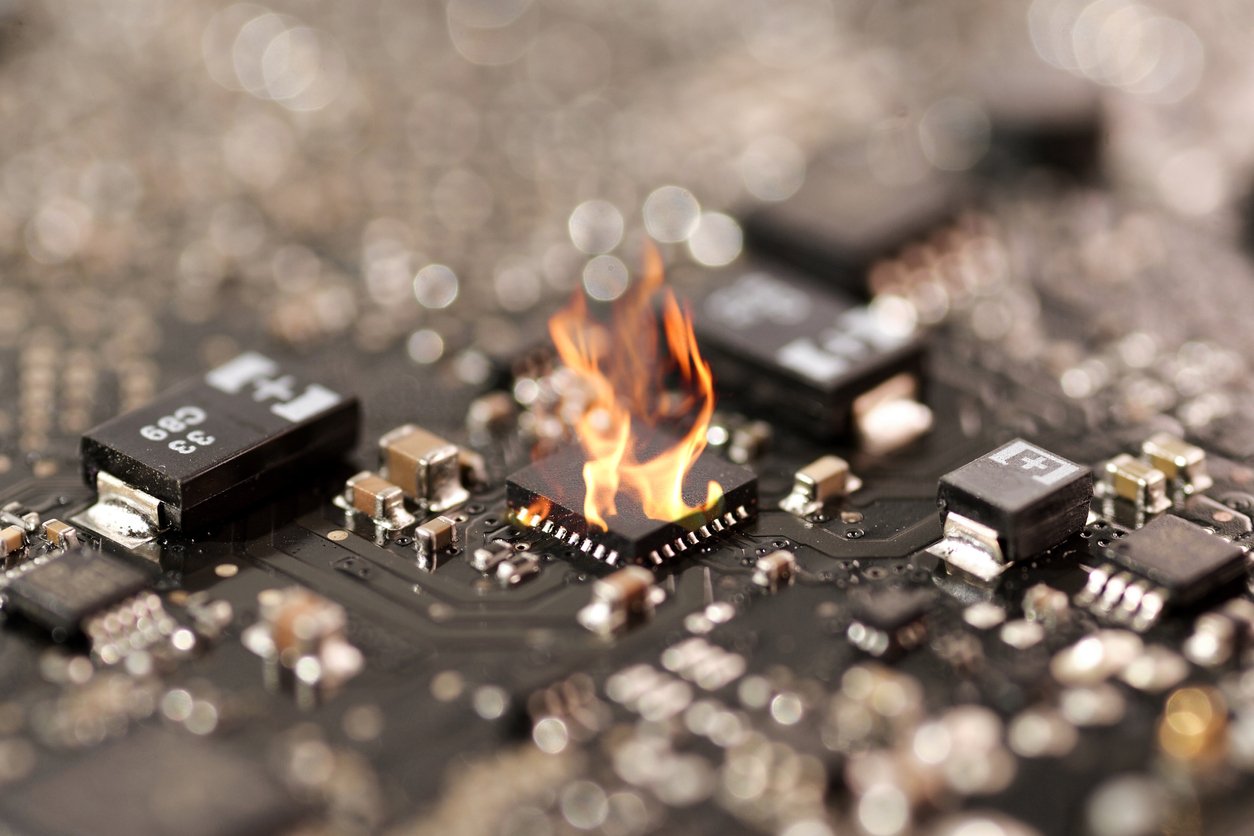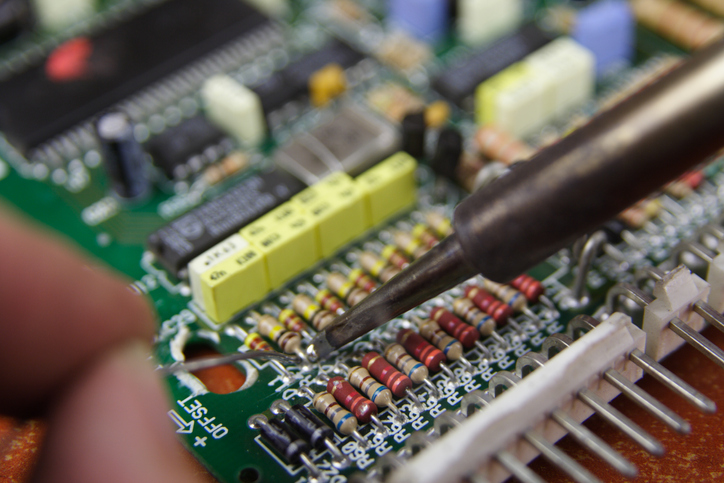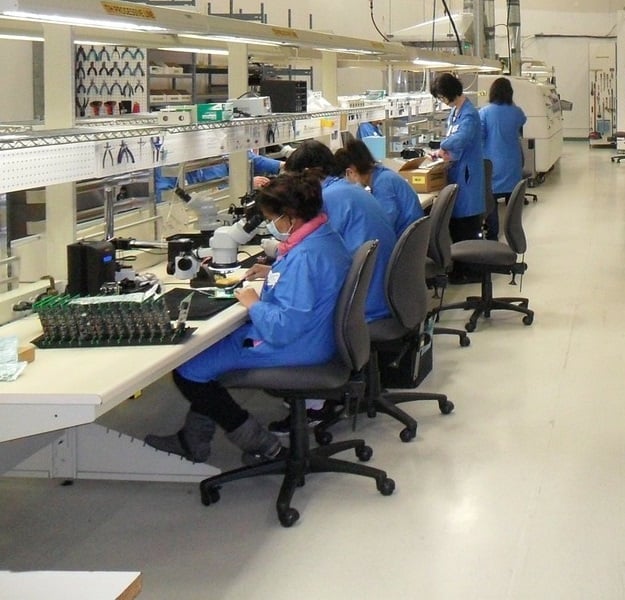Common PCB Defects: What Causes a Circuit Board to Burn?
While there are many common printed circuit board defects, one of the most notorious is burnt components. It's also, unfortunately, one of the most...

Working with small circuit board areas can increase the risk of various PCB defects, tombstoning in particular.
While the grim nature of “tombstone” sounds like a death sentence for your PCB, it’s actually less fatal than, say, a burnt component.
A tombstoning PCB is a soldering defect, which means it’s 100% avoidable. But how?
The tombstone defect in PCBs refers to the partial or complete lifting of passive SMT (surface-mount technology) components from the PCB pad. While one end gets soldered on the chip, the other stands up. Visually, it gives the appearance of a tombstone.
The tombstone defect is also called the Manhattan effect, Stonehenge effect, or Drawbridge effect. Tombstoning PCBs aren’t limited to passive devices. It can also occur on a surface mount device and can be a fatal defect.
The tombstone defect occurs due to different wetting speeds that result in imbalanced torque. Wetting is when the solder reaches a fluid state to attach a component lead to the pad. Ideally, the solder attaches to both pads while the wetting process is uniform, but unbalanced soldering causes tombstoning.
However, a PCB tombstone can also occur due to:
In early SMT manufacturing, the tombstoning phenomenon was related to infrared reflow (IR) and vapor phase reflow (VPR) welding. In VPR soldering, the temperature rises too fast, causing the solder paste to melt unevenly if the two components' ends have different heat capacities. In IR, the different heat absorption colors at both components' ends melt unevenly and cause tombstoning.
All of this begs the question: “How do you avoid tombstoning in PCBs?”
Tombstoning, like other common PCB soldering defects, is preventable. When working with soldering small components, consider:
Always check the pad dimensions. If you make them too large or too small, it may lead to tombstone defects. It reduces the chances of one pad side completing wetting before the other.
Avoid the traditional hot air solder leveling (HASL) for small component sizes like 0201 or 0402. While HASL is cost-effective, it can cause uneven surfaces.
Component routing and placement play a significant role in preventing these types of soldering defects, especially when the components involved are small. Ensure the traces connecting the pads have equal width. They should also connect in a similar orientation.
The solder mask guards against oxidation. However, it can also restrict solder movement in some instances. Assess the solder mask thickness carefully.
If the board's inner layer has unequal copper coverage, it could lead to uneven heating and, consequently, the tombstone defect.
Stencil design consists of stencil technology and aperture design. A proper stencil design should ensure adequate solder paste. Too much solder paste can cause greater torque.
Additionally, there should be an appropriate component-to-paste overlap. If there is too little, adhesion will be inadequate. Conversely, too much paste means solder beads will appear on the components' sides.
PCBs are complex electrical parts, and it's essential to test them for any possible errors or faults that could compromise the board. Designers and manufacturers should monitor and test each component to maintain functioning PCBs that work to their full potential.
Manufacturing issues or defects with PCBs can cause user inconveniences and final products to malfunction. In such cases, manufacturers need to recall all the affected devices and spend more resources and time fixing the issues. PCB testing can help prevent recalls and reworking because it identifies defects and reasons for PCB failure early in the design phase.
Below are some of the essential types of PCB testing to use:
PCB soldering defects like tombstoning can be the death of you, causing expensive recalls and reworking.
However, partnering with an experienced electronic contract manufacturer can ensure your boards are free from soldering defects and tested to industry standards.
To learn more about the benefits of PCB testing for avoiding costly defects, check out our free guide!
(Editor's note: This article was originally published in March 2021 and was updated in December 2024.)

While there are many common printed circuit board defects, one of the most notorious is burnt components. It's also, unfortunately, one of the most...

If you’re considering switching an existing electronic product design from through-hole technology to surface mount technology (SMT), you’ll want to...

Consolidating services is a great way to reduce costs, lead times, & confusion. Unfortunately, most electronics contract manufacturers (ECMs) don’t...